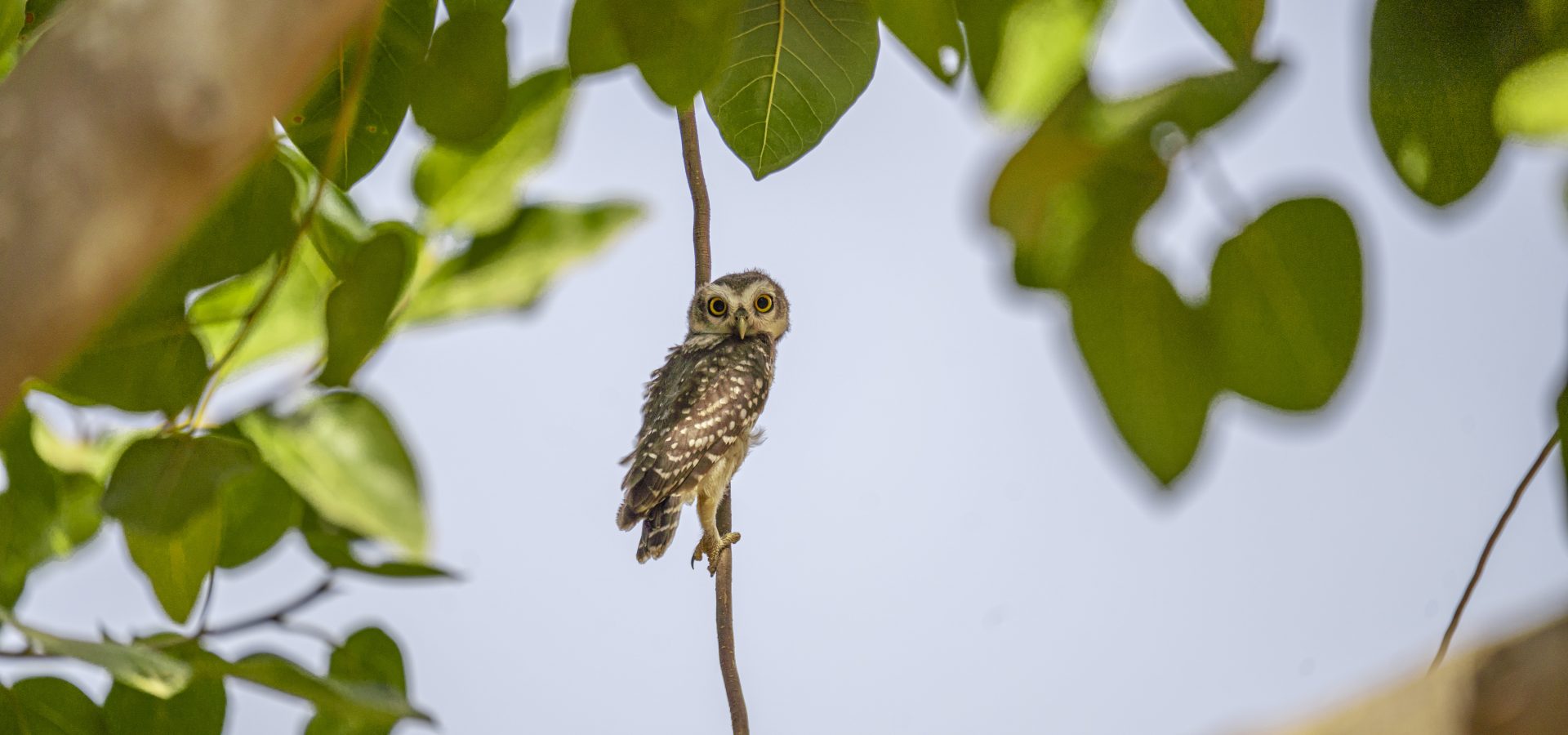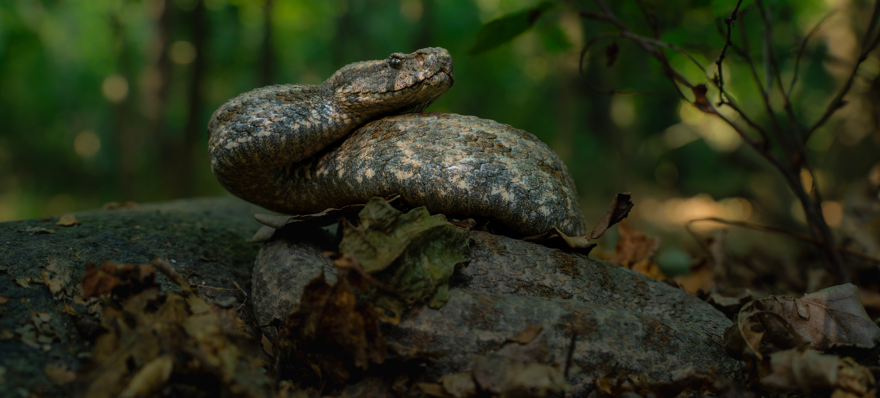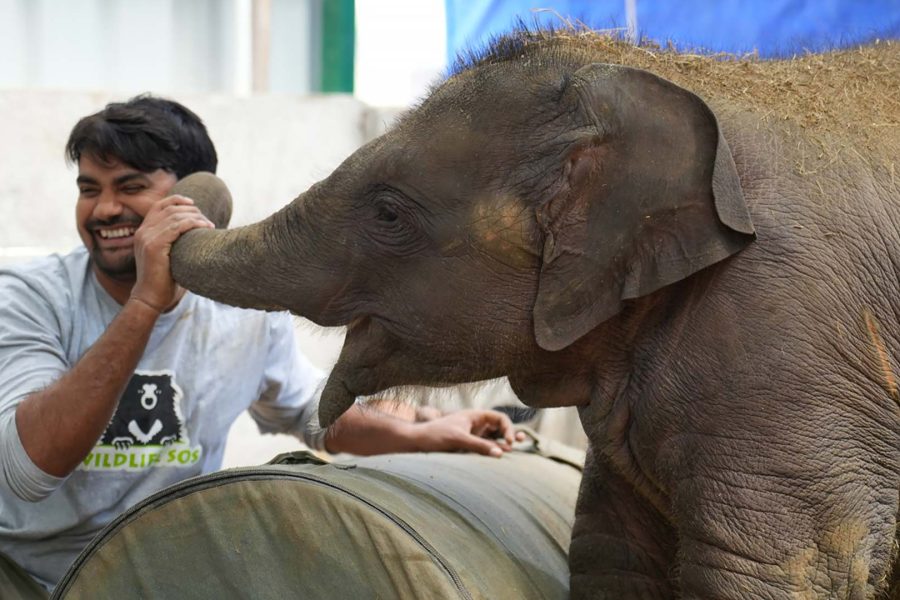Spotted owlets are common across the Indian subcontinent. You can spot one peeping out of a tree hole, or an entire family huddled together on a tree’s branch! Both the male and female of this species look alike: they have greyish-brown upperparts and white spots overall. Compared to most owls, this owlet has a relatively smaller body structure; an adult Spotted owlet is only about 21 centimetres in size!
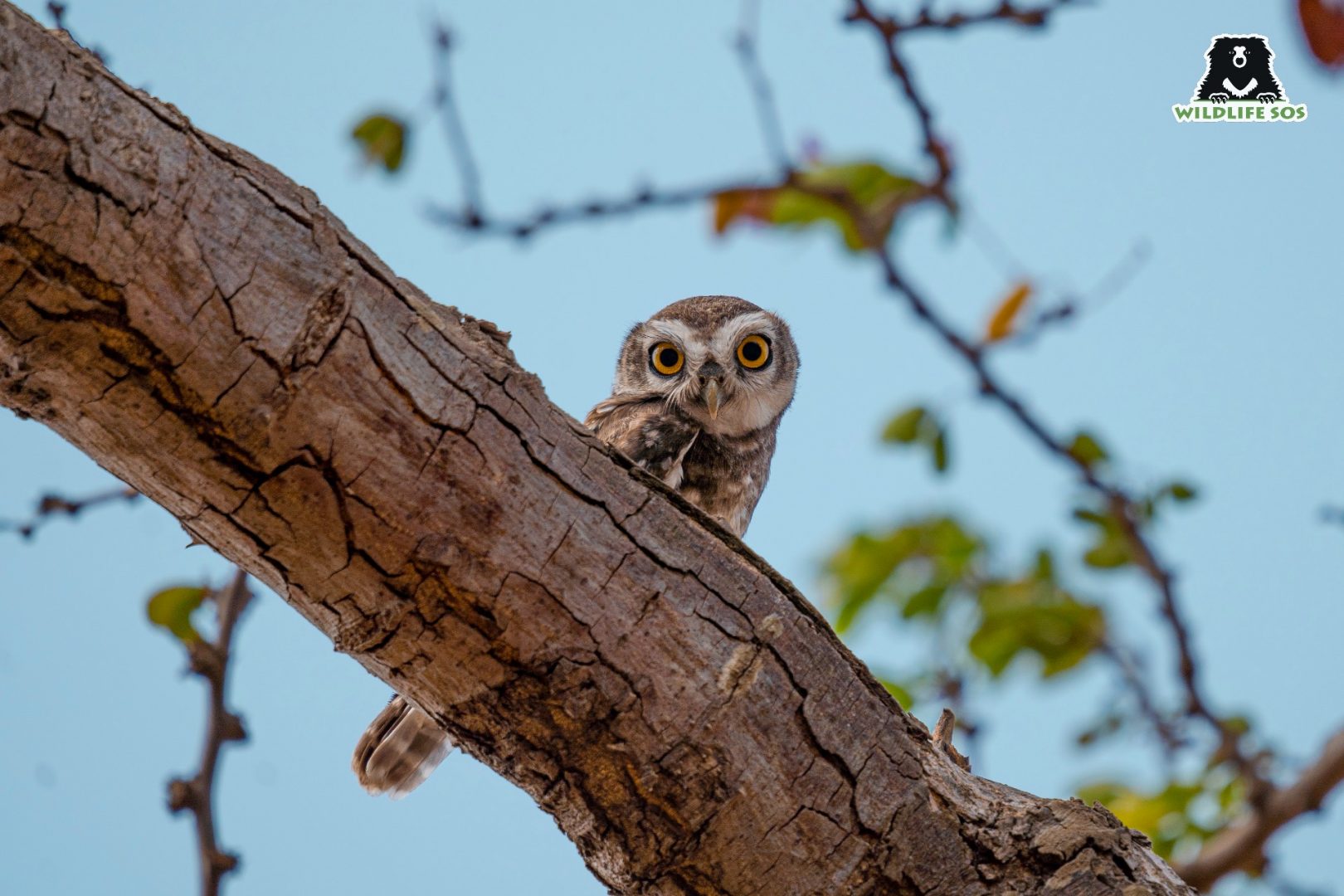
Though this owlet is distributed widely across India, little is known about this endearing species. Here are some interesting facts about the Spotted owlet!
Nomenclature
While its common name is self-explanatory, it is interesting to note that the scientific name of this small owl, Athene brama, has been derived from two divine, mythological figures: a Greek goddess and a Hindu god. In Greek mythology, Athene (or Athena) is known as the goddess of wisdom, war, and liberal arts; and the goddess holds a special bond with the bird. Brahma is a supreme Hindu god, who holds the honorary position of being the Creator.
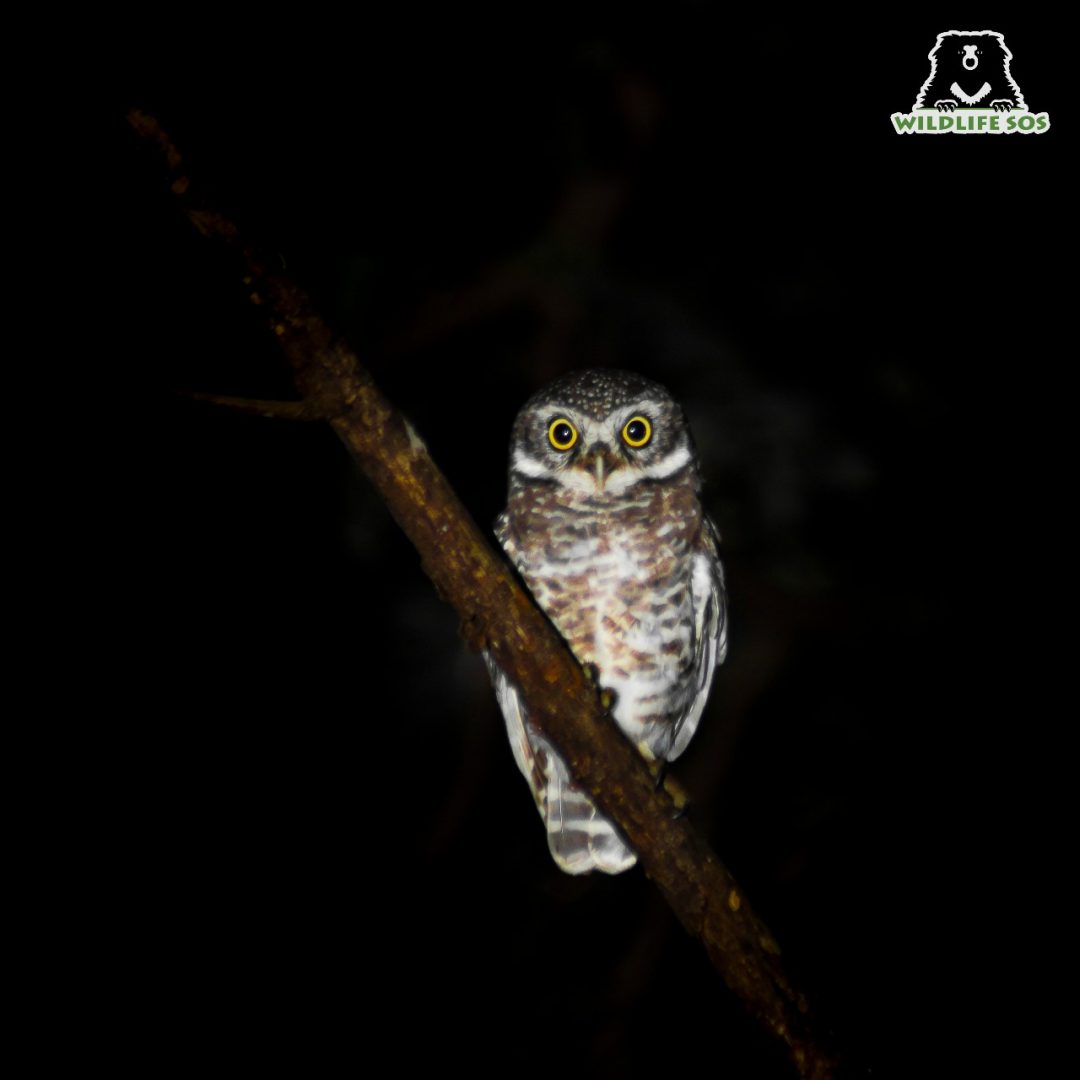
Habits and Behaviours
While Spotted owlets are nocturnal and crepuscular (active during dusk), they can be spotted during the day as well. The species commonly roosts in groups within tree cavities or on branches. This provides them insulation and protection from extreme environmental conditions, and helps them conserve energy. Individuals are known to groom themselves using their beak, a behaviour in birds referred to as preening.
During the breeding season, Spotted owlets communicate using various vocalisations. As they emerge from their roost, the pair produce harsh, territorial calls “chirurrr-chirurrr” and “cheevak-cheevak” before venturing out to forage. During the courtship period, females utter begging calls which may sound like “churr-churr”. Males respond to these calls with a short “peeew” or “keeew”, and then feeds the female as part of a courtship ritual.
In order to distract or attack intruders, these birds fly with their wings beating fast, and produce loud screeches. They may also turn their heads up to 180 degrees to face the intruder!
Breeding and Nesting
This owl species is known to build nests in tree cavities during the breeding season, which lasts from January to April. Some commonly inhabited trees by the Spotted owlets are the Indian Banyan, Rain tree, Neem tree, Coconut tree, Mango tree, and Tamarind tree. These trees are preferred due to their large size, wide canopy cover and thick foliage, which provide ample protection from unfavourable weather conditions. Spotted owlets can camouflage well within these trees too. They shield the owlet and its offsprings from attack by other birds like the House crow, Common myna, Indian Roller, and Rose-ringed parakeet.
In urban areas, these owlets nest in anthropogenic structures, like a dim nook within a building. Females lay a brood of nearly two to five eggs each year. Both male as well as the female partner incubate the eggs. While one is tending to the eggs, the other keeps an eye out for any predators. High-value prey (such as rodents and reptiles) in areas of human habitation can significantly increase the chances of their offsprings’ survival.
Distribution and Habitat
Spotted owlets are found across the Indian subcontinent, except in Sri Lanka. They can also be found in parts of Iran and Afghanistan, along with south-east Asian countries Burma (Myanmar), Thailand and Vietnam. The species is known to avoid dense forests and largely inhabits open forests, orchards, regions such as plantations, woodlands, and even urban spaces. Tree cavities and rock crevices are where they prefer to roost. Lately, with rampant urbanisation, the bird commonly perches on irrigation wells, buildings, and even lamp posts. Spotted owlets are seen close to drains and light posts at night due to the presence of rodents and insects in large numbers.
Farmer’s Friend
Spotted owlet is a carnivorous raptor species, feeding on a variety of prey. As a member of the Strigidae family, these owlets play an important ecological role by feeding on insects and rodents. It is also a predator of mammals like bats, medium-sized birds, reptiles, amphibians, and invertebrates like worms. Along with these, the species also controls the population of agricultural pests, making them a significant ally in the occupation of farming.
Rescue and Care
While the Wildlife SOS Elephant Conservation and Care Centre in Mathura is home to many bird species, the one who visits our centre often is the Spotted owlet! Our Rapid Response Unit is also involved in rescuing the bird from numerous distress situations. The team of caregivers and veterinary officers provides care and treatment to any injured owl that individuals come across in urban spaces.
Although listed as ‘Least Concern’ in the IUCN Red List, it is important to understand how rapid tree-felling significantly impacts this species. Loss of trees means the loss of tree cavities that owlets rampantly use for nesting. Around human habitation, be it rural or urban areas, Spotted owlets find ample prey such as rodents, lizards, birds, arachnids, insects and the like. A significant research in 2007 concluded that the breeding success of Spotted owlets residing around human habitation was, therefore, high. With tree population declining, owlets resort to suitable crevices or gaps within human-made structures to create their nest.
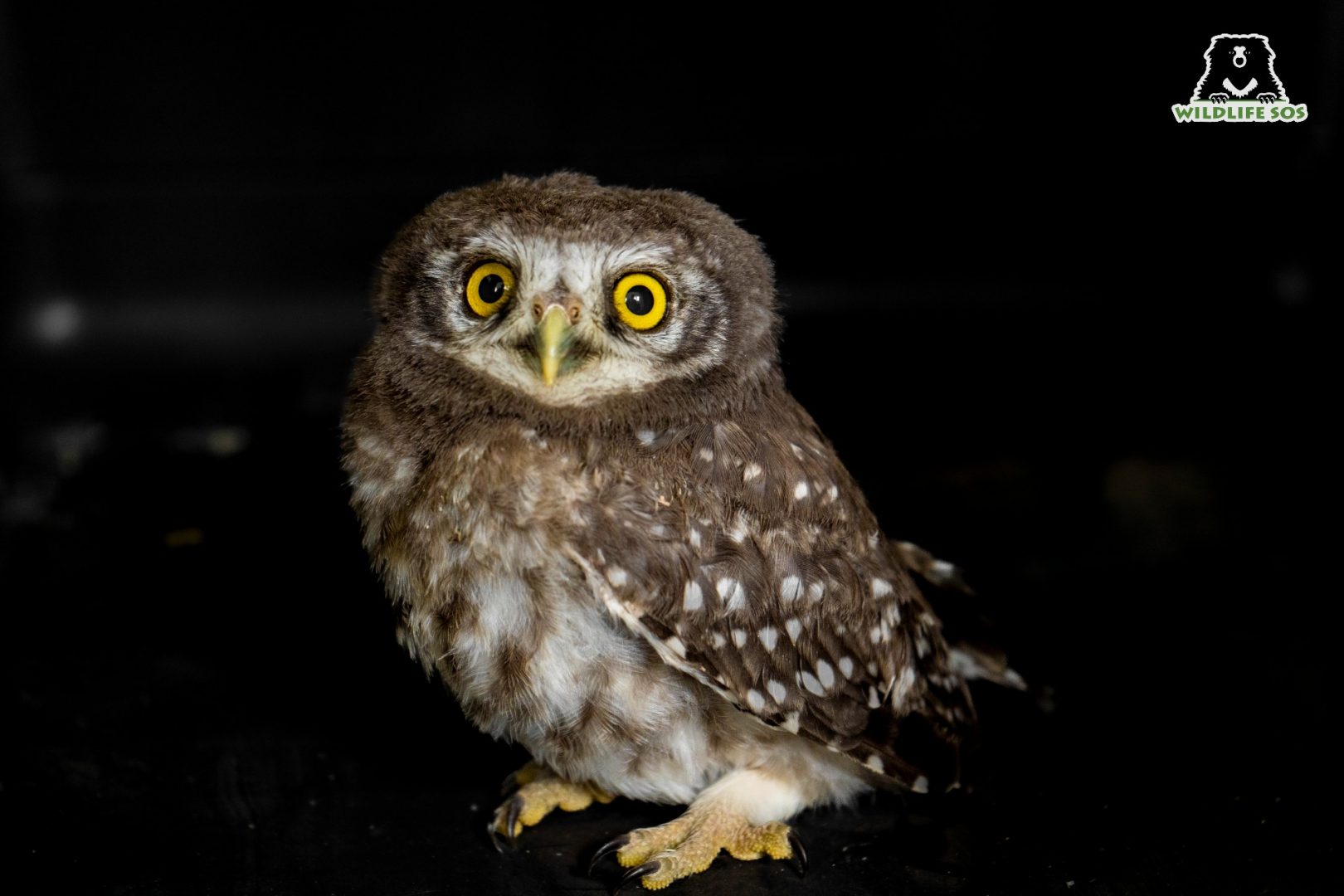
In case you come across an injured or distressed animal, you can reach out to the Wildlife SOS Rapid Response Unit in the following areas:
Delhi NCR – +91 9871963535
Agra – +91 9917109666
Vadodara – +91 9825011117
Jammu & Kashmir – +91 7006692300, +91 9419778280

